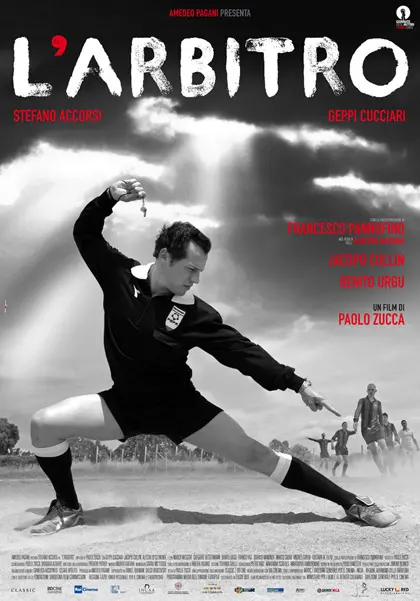

L’arbitro, with its black and white photography, uses images to tell the story of an ancestral Sardinia, with its passions, customs and traditions. Then there are its grotesque characters, who move as if in a western, challenging one another in an almost tribal-like way, as if they’re gangs of gunslingers on the football pitch/in canyons. The mountains used are the rugged mounts of Barbagia, Seneghe, Milis, Bonarcado, Cagliari and Oristano, with a glimpse of Bari and its Stadio San Nicola.
L’arbitro, with its black and white photography, uses images to tell the story of an ancestral Sardinia, with its passions, customs and traditions. Then there are its grotesque characters, who move as if in a western, challenging one another in an almost tribal-like way, as if they’re gangs of gunslingers on the football pitch/in canyons. The mountains used are the rugged mounts of Barbagia, Seneghe, Milis, Bonarcado, Cagliari and Oristano, with a glimpse of Bari and its Stadio San Nicola.

The film tells two parallel stories that come together at the end. Atletico Pabarile is battling with unimpressive results in the third division of the Sardinian league until the arrival of young Matzutzi, a young star player who has returned after emigrating to Argentina, turns their fate around. Referee Cruciani, who is at the height of his career, allows himself to be corrupted, which takes him into the third category refereeing the pivotal game between Atletico Pabarile and their all-time rivals, Montecrasto.